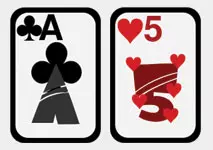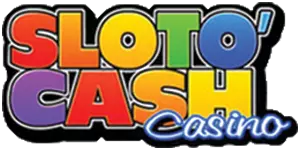Hard Hands in Blackjack
Hard Hands and the Best Way You Can Play Them
Blackjack is a skill-based casino game enjoyed by many, as players have the chance to influence the outcome of each hand by making optimal moves. Before you start learning basic strategy, you need to become familiar with all elements of the card game, including the different types of hands you might be dealt. That way, you can recognize the value of your hand and make the optimal move to increase your chances of winning.
A hard hand is a key term in blackjack, indicating that you have been dealt a hand containing no aces, or an ace that can be counted only as 1. Depending on the type of hard hand you are dealt, you may significantly boost your chances of winning even without taking any action. To learn how to play hard hands optimally, we offer our detailed review of this type of blackjack card combination.
-
 Sign Up Bonus
Sign Up Bonus
Up to $3500
350% Bonus!9.7 -
 Sign Up Bonus
Sign Up Bonus
Up to $500
400% Bonus!9.4 -
 Sign Up Bonus
Sign Up Bonus
Up to $2000
200% Bonus!9.3
Overview
Every hand you receive during the game is either soft or hard, and it is essential to be able to tell them apart and understand the opportunities each offers. In brief, a hard hand is any hand that does not contain an ace, and with such hands you can easily go bust with just one hit.
However, hands that include an ace can also be hard if the ace can be counted only as one. An example of such a hard hand is Ace-9-7. Here, the ace can be counted only as 1; otherwise, the player would automatically go bust.
Hard hands are rather risky and, more often than not, they are stiff hands, meaning their total is between twelve and sixteen. Therefore, it is essential to follow a reliable strategy whenever you receive them so you can make the best possible move in these tricky situations.
To make this term clearer, let’s look at some of the most common combinations you will inevitably encounter during the game. For instance, if your first two cards are a nine and a three, you have a hard twelve.
If you are dealt a nine and a four, the combination is called a hard thirteen. A ten and a six make a hard sixteen. Similarly, a pair of 7s represents a hard fourteen, and so on.
Strategy for Playing Hard Hands
The most widely used strategy for hard hands does not differ much from the well-known basic strategy, which makes it easier to understand and learn. In general, to make the best decision for your hand, you should take into account not only the total of your cards but also the up card of the dealer. Because you are competing against the dealer, you need to assess their position to act accordingly.
The only time you do not have to focus that much on the dealer’s up card is when you are dealt a hard hand totaling five, six, seven, or eight; in such situations it is best to always hit. Whenever you have such hard hands, continue drawing cards until you reach seventeen or surpass the dealer’s total.
If you have a hard hand totaling seventeen, eighteen, nineteen, or twenty, it is best to stand, since these hands already offer decent chances of winning and are almost impossible to improve.
Most hard-hand strategies use the same well-established principle—they recommend a particular move based on the assumption that the dealer’s face-down card is a ten. To determine the best move in any situation, it is recommended to roughly estimate the dealer’s total. For instance, if the up card of the dealer is an eight, you should assume that his total is eighteen.
According to some blackjack players, you should always consider that the dealer’s hole card is a ten. The rationale is that, in a standard 52-card deck, cards worth ten points outnumber any single rank with a different value. In a single deck, you will find sixteen 10-valued cards—four each of Queens, Jacks, Kings, and Tens. Roughly estimated, the 10-valued cards represent 30% of the deck. In other words, 70% of the cards in the deck are not valued at 10. Therefore, it is a common misconception to assume that the dealer always has a 10-valued card in the hole.
Hard 16 and Hard 15
 Hard 16 and hard 15 are among the most feared combinations in blackjack. In most cases, their totals are not high enough to beat the dealer, and trying to improve them is risky because of the high chance of busting.
Hard 16 and hard 15 are among the most feared combinations in blackjack. In most cases, their totals are not high enough to beat the dealer, and trying to improve them is risky because of the high chance of busting.
If you have a hard sixteen hand and the up card of the dealer is nine, ten, or an ace, then it is recommended to simply surrender if this move is available. Unfortunately, many casinos spread variations that do not allow surrender, as they are aware it can be a very beneficial option for players in certain situations.
However, it is worth mentioning that if you have a hard sixteen made up of a pair of 8s, you should proceed differently. In such cases, you should split the hand regardless of the dealer’s up card, because splitting creates two decent hands with a good chance of beating the dealer’s total.
The same applies when you have a hard fifteen and the dealer’s up card is a nine, ten, or ace. In such cases, it is advisable to surrender because your chances of winning are very low. If you are playing a game in which surrender is not allowed, you should stand when the dealer shows two through six and hit otherwise.
Strategy Moves for Other Tricky Hard Hands
If you are dealt a hard 12, you are in a difficult position: the hand is not strong enough to beat the dealer, but it is also likely to bust if you draw a 10-valued card or an ace. Your move depends entirely on the dealer’s up card. If your hand is not made up of paired 6s, you have two options—hit or stand.
Provided that you play multi-deck blackjack where the dealer hits soft 17 and the up card is 4 through 6, then you should stand. If you are wondering why, here is the answer – these are the worst cards a dealer can receive, increasing their chances of going bust. In any other case you must hit. If your hard 12 is made up of paired 6s, you can split, provided the dealer’s up card is 2 through 6; otherwise, hit the pair.
If you have a hard 13, you should hit when the dealer’s up card is 7 through ace. Provided that the dealer shows 2 through 6, then it is best to stand. If you hold a hard 14, stand when the dealer’s up card is 2 through 6; otherwise, hit. If you have paired 7s, you have the option to split. However, you should again follow the basic strategy, which recommends splitting paired 7s when the dealer exposes cards 2 through 8.
When it comes to a hard 10, you can hit or double down depending on the dealer’s up card. According to basic strategy, you should hit only if the dealer shows a ten or an ace; in all other cases, you should double down. If the hard 10 consists of paired 5s, splitting is a bad idea regardless of the dealer’s up card. It is important to note that the number of decks in play and the dealer’s rules do not affect the optimal strategy for a hard 10.
The same logic applies to a hard 11. You should always double down if your hand consists of two cards. Provided that your hard 11 is composed of three or more cards, then you have to hit, as most casinos allow doubling down only on the first two cards.
If your hard 8 consists of paired 4s in single-deck blackjack, your best move is to hit when the dealer’s up card is 2, 3, 7, 8, 9, 10, or an ace. If the dealer shows 4, 5, or 6, split the pair. In multi-deck blackjack, you should double down on paired 4s when the dealer’s exposed card is 5 or 6; in all other cases, hit the pair.
The total-based basic strategy recommends that players in multi-deck blackjack double down on a hard 9 when the dealer’s up card is 3 through 6 and hit in all other cases. But if you indulge yourself in a single-deck blackjack and you receive a hard 9, then you have to double down if the dealer’s up card is 2 through 6. Provided that the dealer’s exposed card is of any other value, then you have to hit.
Conclusion
Learning how to handle hard hands in blackjack is crucial, as such combinations will inevitably occur during play. To deal with them successfully, you need to know the best moves for each situation. Moreover, if you use the term “hard hand” correctly, you will undoubtedly impress the other participants at the table and demonstrate that you are a skilled blackjack player. To educate yourself and understand blackjack literature, you must be familiar with the basic terms, including hard hands.


